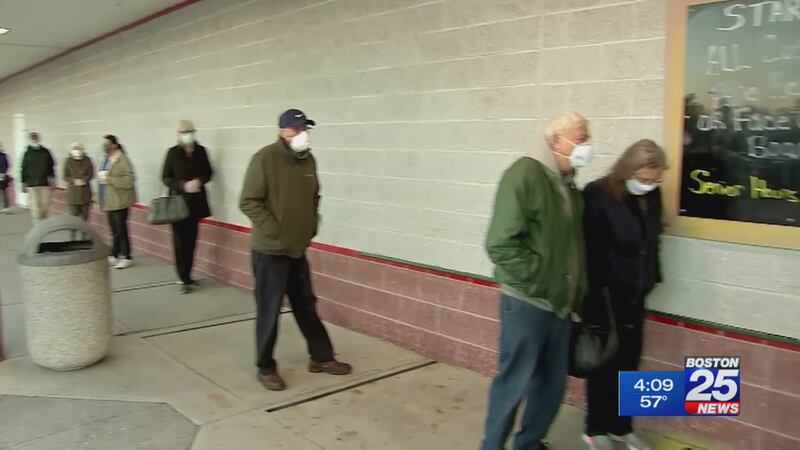BOSTON — Americans are increasingly on the move -- and that could spell bad news for containment of COVID-19.
That is the underlying message of a new projection from the Institute of Health Metrics and Evaluation. "Our current estimate goes out to a total in the United States of 134,000 deaths," said Theo Vos, MD, MSc, PhD, professor of Health Metrics Sciences at the University of Washington, Seattle. "But with uncertainty ranging from under 100,000 to close to 240,000."
The number is particularly shocking because just last week the IHME model was projecting about 72,000 deaths in the same period. Vos said the 86% increase primarily reflects a better understanding of how much more gradually deaths trail off after peaking -- and the fact that many states are beginning to relax restrictions on movement.
>> Previous: COVID-19 forecasting models predict deadly weeks ahead for Massachusetts
“We see mobility figures creeping up in quite a few of the states,” Vos said. The model tracks movement using cellphone data. And the plausible, though not foregone conclusion is that efforts to contain the virus could collapse. “There will be an ongoing transmission of the infection that starts to have an affect on the number of people with symptoms and eventually the number of people at risk of death,” Vos said.
He did not, however, discount the possibility that mobility and physical distancing could co-exist -- and that might keep new infections on the lower end of the estimate.
"Hopefully people will remain sensible and will say, hey we may be able to ease up and get the economy back in function. But we still have to be careful," Vos said.
Epidemiologically, the goal is to manipulate down what's known as the R0 or 'R naught.'
The Basic Reproduction Number, as it's known, gives a picture of a pathogen's contagiousness -- along the lines of, if one person has an infection, how many others can he now infect?
“If it is more than one, then you see the number of cases going up in the community,” Vos said. “If you manage to keep it below one then you’re within a manageable part of the epidemic that doesn’t lead to that dreaded, explosive kind of growth of new cases.”
Expanded testing -- especially to account for asymptomatic carriers, contact tracing and isolation of the sick -- will all help suppress the R0.
Something else that might give a little bit of help in the same department is summer heat. One other change to the IHME model is a variable to account for rising seasonal temperatures.
"There is an independent effect of higher temperature leading to less transmission of disease," Vos said.
But don’t get terribly excited about it, he added. Some very hot places are enduring severe COVID-19 outbreaks, most notably Guayaquil, Ecuador, where so many have died corpses have reportedly been wrapped in plastic and left by the street.
“It’s not as if by magic everything in the summer will disappear,” Vos said. And if there’s enough mobility, this beneficial ‘temperature effect,’ he added, will quickly be negated.
Download the free Boston 25 News app for up-to-the-minute push alerts
>> Complete local and national coronavirus coverage here
RESOURCES:
- Massachusetts Coronavirus Information
- Boston Coronavirus Information
- Follow us on Facebook and Twitter | Watch Boston 25 NOW








